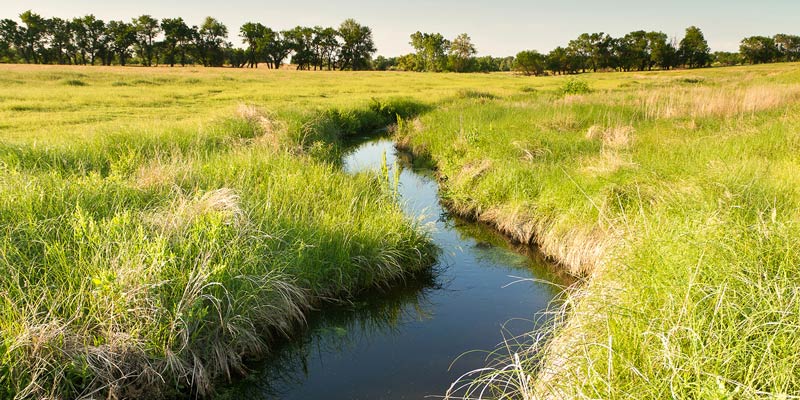2 min read
Navigable Waters Protection Rule: A Clean Water Act Rollback
![]() Transect Team
:
Jan 24, 2020
Transect Team
:
Jan 24, 2020

Listen to the audio version
Yesterday, President Trump announced the Navigable Waters Protection Rule. This action is the next step in this administration's goal to review and revise the definition of waters of the United States (WOTUS) under the Clean Water Act (CWA). The waters of the United States are water bodies, rivers, streams, and wetlands protected under Clean Water Act Section 404. Under Section 404, any impacts (placement or removal of fill) to WOTUS require a federal permit.
Jurisdictional Waters of the Navigable Waters Protection Rule
The final rule narrows the definition of WOTUS in comparison to currently accepted CWA and court interpretations. In the new rule, "waters of the United States" are limited to:
-
The territorial seas and traditional navigable waters;
-
Perennial and intermittent tributaries that contribute surface water flow to such waters;
-
Certain lakes, ponds, and impoundments of jurisdictional waters; and,
-
Wetlands adjacent to other jurisdictional waters.
Impacts on Ephemeral Streams
Notably, the rule explicitly excludes all ephemeral streams, which are streams that are dry most of the year and are typically only wet following rainfall.
This rule has significant implications for private and public development projects that plan to impact streams and wetlands. Ephemeral waters make up a considerable percentage of the waterbodies in the U.S., particularly in the Arid West. This water feature flows into downstream waters, carrying pollution in its flow and yielding the ability to produce great environmental harm when unregulated.
The 2015 rule gave these streams federal protection, deeming them crucial to overall water quality. If ephemeral waters are excluded by regulation from federal oversight, then the number of federal permits required by project development will decline considerably.
Impacts of the New Rule
At first glance, this appears to be a boon for development projects that often encounter the Clean Water Act, including oil and gas, renewable energy, commercial development, utilities, transportation, and many others. However, this rule will undoubtedly be subject to many federal lawsuits and court rulings, as we saw with the Obama-era 2015 Clean Water Rule (a.k.a. the WOTUS Rule), which tried to broaden the definition of WOTUS, and which many decried as government overreach. By narrowing protections to waters of the United States beyond the current interpretations, this rule swings in the opposite direction.
This drastic shift in federal protection will likely confuse developers regarding defined, regulated water and lead to an environmental permitting disaster. We recommend developers begin to study up on required permits, call an environmental consultant, use a wetlands map, and practice early environmental due diligence. It’s about to get messy. The final rule's effective date has not been set, but we expect it to be sometime in mid-March 2020.
UPDATE: NWPR STATUS
Environmental groups met the NWPR with severe backlash. The ruling muddied the understanding of jurisdictional waters and was yet another feeble attempt to redefine WOTUS. Overall, this ruling left land developers confused, and waters unprotected. It was a weird time for all of us.
New Clean Water Act Protection to Come
The Biden administration enlisted the Environmental Protection Agency (EPA) and the United States Army Corps of Engineers (USACE) to redefine WOTUS. Jurisdictional determination of these waters began after President Biden signed Executive Order 13990 on January 21, 2021. Currently, the federal government defines WOTUS under a pre-2015 rule definition.
We are all anxiously awaiting this ruling and are preparing our popcorn for the aftermath. Hopefully, this new rule will end this game of regulatory ping pong and reach a concrete definition for WOTUS. As you can tell, we're dreamers. We will keep you up to date as a final rule is reached.
